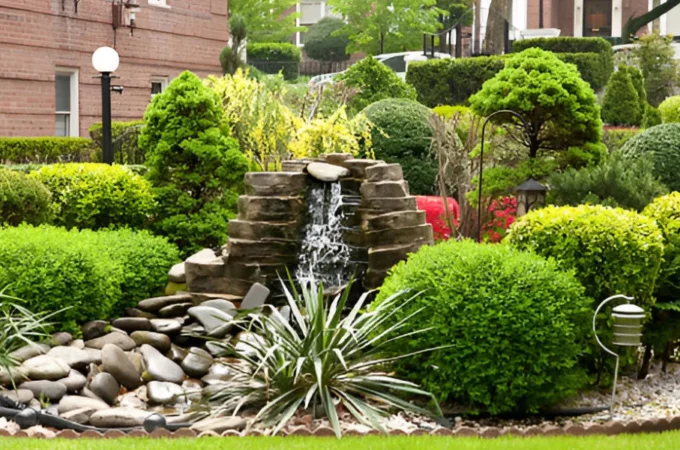
Summer Lawn Maintenance: Essential Tools and Tips
As the temperatures rise and the sun shines brightly, it’s time to give your lawn the care it needs to thrive during summer. In this blog, we’ll explore essential tools and tips to help you keep your lawn looking lush, green, and healthy all season long. From mowing and watering techniques to pest control and fertilization, we’ll cover everything you need to know to maintain a beautiful lawn throughout the summer. Whether you’re a seasoned gardener or a novice homeowner, these practical tips will help you achieve the perfect summer lawn and create an inviting outdoor space for relaxation and enjoyment. Let’s get started!
Table of Contents
ToggleEssential Tools for Summer Lawn Maintenance
A well-maintained lawn can enhance your home’s curb appeal and provide a safe and healthy outdoor space for you and your loved ones to relax, play, and entertain. Here are some essential tools you need to keep your lawn in tip-top shape this summer:
Walk Behind Trimmers
Isn’t it annoying to constantly switch between a lawnmower and an edger to get those clean, crisp edges on your lawn? Or worse, when you manually cut grass around hard-to-reach areas like fences, trees, and flower beds? Well, not anymore.
A wheeled trimmer from some top-notch brands is the perfect tool for keeping your lawn edges looking sharp with minimal effort.
- It features 5x the power of a handheld trimmer, making it perfect for dense grass and weeds.
- Its wheeled design allows for easy maneuverability around your lawn.
- It’s also perfect for trimming grass along fences, retaining walls, and other hard-to-reach areas.
- It saves time and eliminates the need for multiple tools.
You can check for high-quality walk behind trimmers online and purchase the perfect one for your lawn.
Watering Tools
Water is an essential element for a healthy and green lawn. However, you must understand how much and when to water your lawn. Watering too little can lead to dry, brown patches, while overwatering can cause fungal diseases.
Here are some watering tools to help you ensure just the right amount of water for your lawn:
- A garden hose with an adjustable nozzle for precise control of water flow.
- A sprinkler with an adjustable spray pattern to cover larger areas of your lawn.
- A rain gauge to measure rainfall and determine when extra watering is needed.
- A soil moisture meter to determine the topsoil’s moisture level and adjust watering accordingly.
- A drip irrigation system for precise and efficient watering in specific areas of your lawn.
Garden Tillers
Tilling is an essential step in preparing your lawn for seeding or planting. A garden tiller helps loosen compacted soil, remove weeds, and mix in organic matter for better plant growth.
Choose between a manual or electric tiller, depending on your lawn’s size and personal preference. Some benefits of using a garden tiller include:
- It saves time and energy compared to manually tilling the soil.
- It creates a smooth and even surface for planting.
- It improves soil drainage and aeration, leading to healthier plant roots.
- It helps incorporate nutrients and amendments into the soil for better plant growth.
- You can use garden tillers to break up hard ground, install garden beds, or quickly build raised beds.
Summer Lawn Maintenance Tips to Keep Your Lawn Healthy and Green
Take Pest Control Measures
Pests can wreak havoc on your lawn, damaging plants and making it difficult for grass to grow. Some common pests include grubs, chinch bugs, and armyworms.
What to do:
- Regularly inspect your lawn for signs of pest infestation, such as wilting or brown patches.
- Use organic pest control methods such as introducing beneficial insects or natural sprays to deter pests.
- Keep your lawn properly maintained to prevent pest attraction, such as regularly mowing and removing debris or standing water.
- If you have flowerbeds or vegetable gardens alongside your lawn, consider rotating plantings regularly. This will disrupt pests’ life cycles, making it more challenging for them to thrive.
Fertilize Regularly
Fertilizing is crucial for maintaining a healthy and green lawn. It provides essential nutrients for grass growth and helps to prevent weeds.
What to do:
- Use a slow-release fertilizer to provide a steady supply of nutrients over time.
- Avoid fertilizing during hot weather, as it can cause damage to your lawn.
- Aerate your lawn before fertilizing to ensure better absorption of nutrients into the soil.
- Follow proper application rates and timings as instructed on the fertilizer packaging.
Water Properly
Watering is essential for a healthy lawn, but it’s important to do it correctly. Improper watering can lead to shallow roots, weed growth, and disease.
What to do:
- Understand your soil type as it influences water retention. Sandy soils may need more frequent watering, while clayey soils retain water better.
- Water deeply and infrequently, allowing the water to reach about 6 inches into the soil.
- Water should be used early morning or late evening to prevent evaporation and fungal growth.
- Adjust your watering schedule according to the weather conditions.
Avoid Overcrowding
Overcrowding is common in lawns, especially with quickly spreading plants and trees. Overcrowding can result in some areas getting more nutrients, water, and sunlight than others, leading to an unhealthy lawn.
What to do:
- Regularly thin out overgrown areas.
- Avoid planting too close together, especially in areas with heavy foot traffic.
- Provide enough space between plants for proper air circulation and sunlight.
- Use mulch or ground cover in areas where grass won’t grow well.
Conclusion
Summertime BBQs, backyard picnics, and outdoor activities become more enjoyable when you have a lush and healthy lawn and a beautiful landscape. So, inspect your lawn regularly for pests, keep it well-maintained, and fertilize and water properly for a vibrant and healthy lawn. Moreover, purchase essential lawn maintenance tools, such as walk behind trimmers. They are perfect for maintaining hard-to-reach areas and dense weeds. Garden tillers help loosen compacted soil and promote healthy root growth. Lastly, watering tools like sprinklers, garden hoses, soil moisture meters, and rain gauges can help you accurately water your lawn and keep it thriving.






